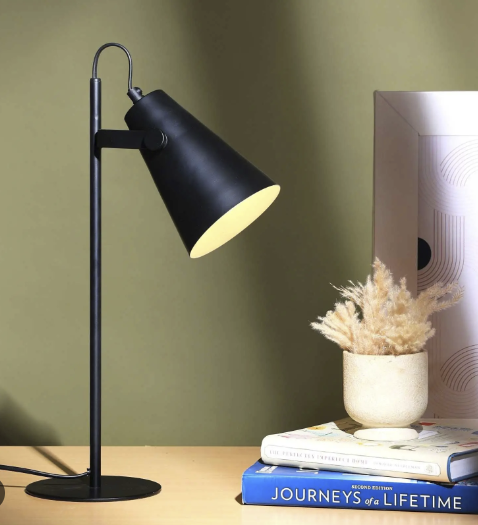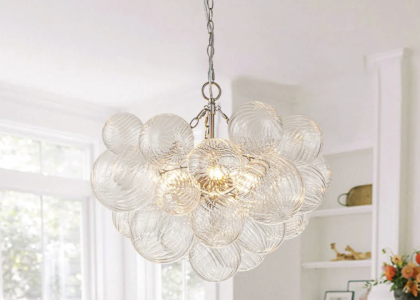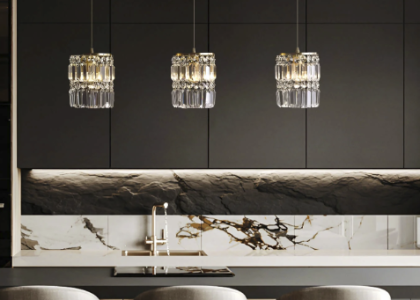Proper lighting plays a crucial role in creating an effective study environment. The right illumination not only enhances visibility but also significantly impacts concentration and productivity. When students are exposed to adequate lighting, they are more likely to engage with their materials, absorb information, and retain knowledge.
Conversely, insufficient or harsh lighting can lead to distractions, making it difficult for students to focus on their tasks. A well-lit study area fosters a positive atmosphere that encourages learning, allowing students to immerse themselves in their studies without the hindrance of shadows or glare. This is particularly important in today’s digital age, where screens are ubiquitous, and the need for clear visibility is paramount.
Moreover, the psychological effects of lighting Housetonlighting cannot be overlooked. Natural light has been shown to improve mood and cognitive function, while artificial lighting can either enhance or detract from this experience. For instance, warm light can create a cozy and inviting environment, while cool light can stimulate alertness and focus.
Understanding the nuances of how different types of lighting affect mood and productivity is essential for creating an optimal study space. By prioritizing proper lighting, parents and educators can help students develop better study habits and achieve academic success.
Potential Eye Strain and Damage from Poor Lighting
Poor lighting conditions can lead to a range of eye-related issues that may have long-term consequences. When students study in dimly lit environments, they often strain their eyes in an attempt to see their materials clearly. This strain can manifest as discomfort, fatigue, and even headaches, which can further impede their ability to concentrate.
Over time, consistent exposure to inadequate lighting can contribute to more serious vision problems, such as nearsightedness or astigmatism. The cumulative effect of eye strain can create a vicious cycle where students become increasingly frustrated with their studies, leading to decreased motivation and performance. Additionally, the type of artificial lighting used can exacerbate these issues.
For example, fluorescent lights are known for their harsh glare and flickering effects, which can be particularly taxing on the eyes. Students who spend extended periods under such lighting may experience symptoms of digital eye strain, including dryness, blurred vision, and difficulty focusing. It is essential for parents and educators to recognize the potential dangers associated with poor lighting and take proactive measures to ensure that students have access to appropriate illumination.
By addressing these concerns early on, they can help safeguard children’s vision and promote healthier study habits.
Benefits of Using a Study Lamp
Investing in a quality study lamp can yield numerous benefits that enhance the overall learning experience. A dedicated study lamp provides focused illumination that allows students to see their work clearly without straining their eyes. This targeted light helps reduce shadows and glare on reading materials, making it easier for students to read and write comfortably.
Furthermore, many study lamps come equipped with adjustable brightness settings, enabling users to customize the light intensity according to their preferences and the time of day. This flexibility is particularly beneficial during late-night study sessions when softer light may be more conducive to concentration. In addition to improving visibility, study lamps can also contribute to better posture and ergonomics.
Many modern lamps are designed with adjustable arms or heads that allow users to direct light precisely where it is needed most. This feature encourages students to maintain proper posture while studying, as they are less likely to lean forward or squint in an attempt to see their work clearly. By promoting a more comfortable studying position, a good study lamp can help prevent musculoskeletal issues that may arise from poor posture over time.
Ultimately, the benefits of using a study lamp extend beyond mere illumination; they encompass overall well-being and academic performance.
Features to Look for in a Study Lamp
When selecting a study lamp, several key features should be considered to ensure it meets the specific needs of the user. First and foremost, adjustable brightness levels are essential for creating a versatile study environment. A lamp that offers multiple brightness settings allows students to tailor the light intensity based on their activities—whether they are reading, writing, or working on a computer.
Additionally, lamps with color temperature options can further enhance the studying experience by providing warm light for relaxation or cool light for increased focus. Another important feature is the lamp’s design and adjustability. A flexible arm or swivel head enables users to direct light precisely where it is needed without causing glare or shadows on their work surface.
Furthermore, consider the lamp’s size and footprint; a compact design may be more suitable for smaller desks or study areas. Energy efficiency is also worth noting; LED lamps consume less power and have longer lifespans compared to traditional incandescent bulbs, making them a more sustainable choice in the long run. By carefully evaluating these features, parents can select a study lamp that not only enhances visibility but also promotes healthy studying habits.
Tips for Choosing the Right Study Lamp for Your Child
Choosing the right study lamp for your child involves considering both their individual preferences and the specific requirements of their study environment. Start by involving your child in the selection process; this not only empowers them but also ensures that they feel comfortable with the final choice. Discuss their studying habits—do they prefer working in bright light or softer illumination?
Understanding their preferences will help narrow down options that cater to their unique needs. Additionally, assess the layout of your child’s study area before making a purchase. Consider factors such as desk size, available outlets, and existing decor when selecting a lamp.
A lamp that complements the room’s aesthetic while providing adequate illumination will create a more inviting study space. It’s also wise to prioritize safety features; look for lamps with stable bases to prevent tipping and those made from non-toxic materials. By taking these factors into account, you can ensure that your child has a study lamp that not only enhances their learning experience but also fits seamlessly into their environment.
Proper Positioning of the Study Lamp
The positioning of a study lamp is just as important as its features when it comes to maximizing its effectiveness. Ideally, the lamp should be placed at an angle that minimizes glare on reading materials while providing ample light coverage across the workspace. For right-handed students, positioning the lamp on the left side of the desk allows for optimal illumination without casting shadows over their writing hand; conversely, left-handed students should place the lamp on the right side for similar reasons.
This strategic placement helps create a comfortable studying environment where students can focus without distractions. Moreover, consider the height of the lamp in relation to the desk surface. A lamp that is too low may not provide sufficient light coverage, while one that is too high may create harsh shadows or glare.
The ideal height allows for even distribution of light across the workspace without causing discomfort or eye strain. Additionally, ensure that the lamp is positioned away from windows or other sources of natural light that could interfere with its effectiveness during different times of day. By paying attention to these details, parents can help create an optimal studying environment that supports their child’s learning.
Setting Up a Comfortable and Safe Study Area
Creating a comfortable and safe study area goes beyond just selecting the right lamp; it involves considering various elements that contribute to an effective learning environment. Start by ensuring that the study space is free from distractions such as noise or clutter. A clean and organized area allows students to focus better on their tasks without being sidetracked by surrounding chaos.
Additionally, incorporating comfortable furniture—such as an ergonomic chair and desk—can significantly enhance comfort during long study sessions. Temperature control is another critical aspect of setting up a conducive study area. A space that is too hot or too cold can hinder concentration and productivity.
Aim for a comfortable temperature that allows your child to focus without feeling fatigued or restless. Furthermore, consider adding personal touches such as motivational posters or plants; these elements can create an inviting atmosphere that encourages creativity and engagement with learning materials. By thoughtfully designing a comfortable and safe study area, parents can foster an environment where children feel motivated and empowered to succeed academically.
Other Measures to Protect Your Child’s Eyes while Studying
In addition to proper lighting and ergonomic setups, there are several other measures parents can take to protect their child’s eyes while studying. One effective strategy is implementing regular breaks during study sessions; this practice helps reduce eye strain associated with prolonged screen time or reading without rest. The 20-20-20 rule is particularly useful: every 20 minutes, encourage your child to look at something 20 feet away for at least 20 seconds.
This simple exercise allows the eyes to relax and refocus, minimizing fatigue. Furthermore, promoting good habits around screen usage is essential in today’s digital age. Encourage your child to maintain an appropriate distance from screens—ideally at least an arm’s length away—and ensure that they are using devices with proper blue light filters when necessary.
Additionally, regular eye check-ups with an optometrist can help monitor any changes in vision and address potential issues before they become significant problems. By combining these strategies with proper lighting and ergonomic considerations, parents can create a holistic approach to eye health that supports their child’s academic success while safeguarding their vision for years to come.






